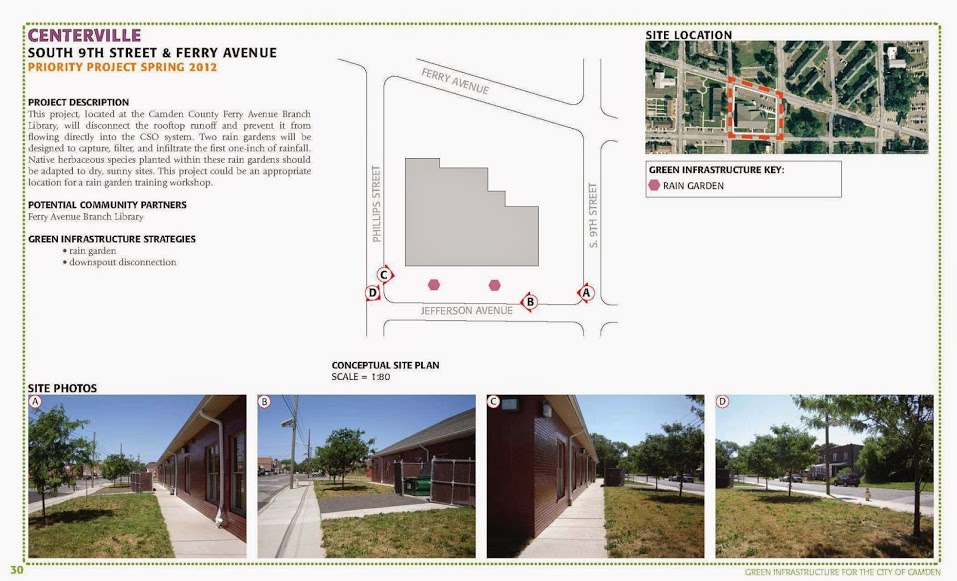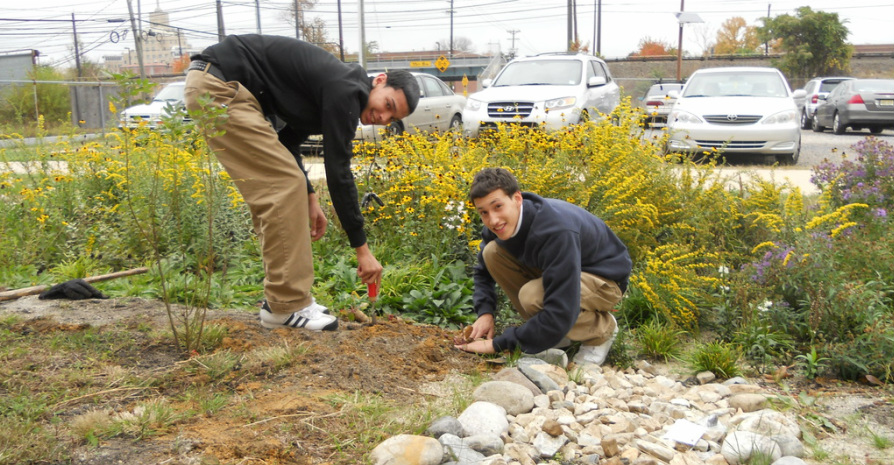Camden SMART Initiative's
Completed Projects:
Camden SMART presents CAMDEN REPORTS!
|
Camden Reports was developed to provide residents and visitors of Camden City with an opportunity to anonymously report illegal dumping and flooding. Local stakeholders, through the Camden Collaborative Initiative, will analyze and address information submitted through Camden Reports. We need your help! Please click the below button to submit your report(s) of illegal dumping or flooding:
|
|
Check out all of SMART's Green Infrastructure Projects!
Von Nieda Park - Baldwin's RunIn October 2015, SMART Partners completed the first phase on one of the team's most complex and rewarding projects to date—the Von Nieda Park Stormwater Management & Park Improvement Project. The project mitigates flooding in Cramer Hill via separation and improvements to the storm and sanitary pipe infrastructure in and around the park, daylighting a section of the Baldwin’s Run tributary to the Delaware River Backchannel, and green infrastructure enhancements. To date this is the largest green infrastructure project constructed by Camden SMART Partners, managing over 50 million gallons of stormwater annually.
|
Liney Ditch Park Shelterbelt Tree Planting
|
Liney Ditch Park and the Camden County Municipal Utilities Authority (CCMUA) are located in the Waterfront South in Camden City. This neighborhood experiences the worst air quality in Camden, with many industrial neighbors contributing pollution and unpleasant odors. For years, the community has requested more trees in Liney Ditch Park and in the neighborhood as a whole. The NJ Tree Foundation (NJTF) is a member of Alliance for Community Trees and the tree planting is made possible by partnership with TD Bank. NJTF is a state-wide non-profit organization dedicated to planting trees in New Jersey’s most under-served neighborhoods.
On October 15, 2013, the NJTF, with assistance of Camden City, CCMUA and TD Bank, undertook the largest tree planting in Camden City. Over 90 TD bank volunteers planted the trees as part of TD Tree Day. The deciduous and evergreen trees planted absorb odors and stormwater, improve air quality, provide shade, beautify Liney Ditch Park, and provide wildlife habitat. The 117 new trees planted are now part of the shelterbelt surrounding the CCMUA Waste Water Treatment Plant. |
Ferry Avenue Library Rain GardensThis rain garden project, located at the Camden County Ferry Avenue Branch Library, disconnected the rooftop runoff and prevented it from flowing directly into the Combined Sewer Overflow (CSO) system. The two rain gardens were designed to capture, filter, and infiltrate the first one-inch of rainfall.
|
Woodrow Wilson High School Rain Garden |
In partnership with the Nature Conservancy's LEAF Program and Rutgers 4-H, members of the Camden SMART Team constructed a 200 square foot rain garden designed to treat stormwater from a 2” rain event at an infiltration rate of .5” per hour. This rain garden captures stormwater from the school’s rooftop and enables it to infiltrate into the ground before it has a chance to become stormwater runoff.
|
Brimm Medical Arts High School Rain GardenStudents at the Brimm School partnered with the members of the SMART Team to construct a 650 square foot rain garden on school grounds and plant various street trees in front of the school. In addition to the rain garden and tree plantings, the project removed about 450 square feet of impervious paving. This effort of de-paving will further help to mitigate stormwater runoff.The rain garden planting, in conjunction with a classroom stormwater management educational component, taught students the benefits of rain gardens in helping mitigate the larger issues of flooding and runoff in Camden.
|
Waterfront South Rain GardenThe new Waterfront South Park Rain Gardens opened July 26th, 2011 in a ceremony showcasing the City of Camden. The park, built on the site of an abandoned gas station that was demolished and remediated with the help of the state Department of Environmental Protection (DEP), consists of four rain gardens connected by walking paths that have designed by the Rutgers Agricultural Extension Service. The landscaping, grating, and plants of the garden will function to capture rainwater and prevent it from entering Camden's combined sewer system, reducing flooding, sewer backups, and sewage outflows during major rain events.
|











